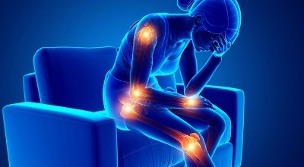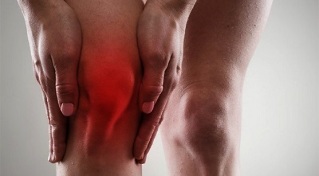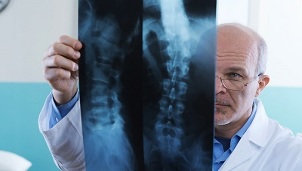Tissues in healthy joints are made up of cells that are able to recover from damage - regeneration. Bones, cartilage, synovium, and other components can become unhealthy. Dead, damaged cells accumulate in certain tissues. They are unable to share, which inhibits regeneration. They are difficult to remove, which is a major problem in restoring joint health.
With any physical exertion, strong mechanical stress can damage cells and lead to death. An already ill joint has a hard time bearing the load. It is very difficult to heal. In order to avoid or overcome the disease, the defense mechanisms of joint tissues and cells must be understood. In the field of joint damage, we distinguish between arthritis, arthrosis, polyarthritis and other diseases. Let’s examine in detail the difference between arthritis and arthrosis.
The first cause of the disease
The joint is protected by neuromuscular attenuation. Thanks to the muscle contraction control system, the shock does not occur or is alleviated. The nervous system ensures smooth movements and distribution of loads. At rest, the muscles also stimulate micro-vibrations, which leads to the release of lubricant, the removal of dead cells.
Impairment of neuromuscular attenuation occurs due to poor conduction of nerve pathways. For example, fatigue weakens the joint’s defenses. Dead cells begin to accumulate without time to be excreted. The result is inflammation. Weakening of protection accelerates not only the degradation of the joints but also the spine.
There are several factors that increase the risk of joint disease, from blows, bruises, overload, hypothermia. Arthritis occurs - an inflammatory process. If it is impossible to cure for months, deformities begin - arthrosis.
What is arthritis: causes, symptoms
Specify the reasons for the occurrence:
- Improper food.
- Bad habits: alcohol, smoking.
- Systemic hypothermia.
- Injuries.
- Excessive stress on the joints.
- Consequences of previous diseases and infections.

The disease has the following symptoms:
- Swelling in the joint area, painful sensations, increased sensitivity, limited mobility (ie synovitis).
- Sharp pains when moving and at rest.
- Morning stiffness overnight due to swelling. An hour after the start, the activity will pass.
In addition to the signs listed, symptoms of inflammation may also appear: weakness, sweating, chills, fever. Some people have headaches and weight loss. Sometimes concomitant diseases occur: the heart and lungs are affected.
What Is Arthrosis: Causes And Symptoms
Due to progressive arthritis, symptoms of arthrosis do not appear in most cases until after 40 years.
The disease is characterized by the following manifestations:
- Pain does not appear at rest, but during exertion. Unpleasant sensations occur in the hip or knee joint while walking, using a ladder, or exercising. This initial pain may disappear with further movements. There is also a strong painful sensation when bending and bending, accompanied by crackling.
- Pain, when it begins to move after rest, occurs as a result of deposition on the abrasive surface of the detritus, the products of cartilage and bone destruction. The sensation may stop after 15 minutes because this sediment is displaced.
- Venous congestion causes dull pain at night.
Inflammation often occurs in arthrosis. In addition to painful sensations, swelling is observed (as in arthritis). If symptoms of both diseases persist, arthritic arthritis is diagnosed.
The long-term course of arthrosis can lead to limited mobility. Degenerative changes (contractures) in the tendons in the muscles begin and then deform. In this case, the diagnosis is made - deforming arthrosis or osteoarthritis.
As a result of computed tomography, distinguish the stages of the disease, which are determined by X-rays:

- 1 degree- slight changes in cartilage, bone. Painful swelling occurs with moderate effort, decreasing after a rest period.
- 2 degrees- the destruction of cartilage, the growth of bone tissue at the edges in the form of osteophytes. Narrowing of the joint space, accompanied by constant pain. The bloating will also be stable.
- 3, 4 degrees- extensive destruction of cartilage and bone. The swelling does not go away, the ligaments and muscles do not work properly, and deformation occurs. The axis of the load is disturbed in the joint.
Risk factors for arthrosis include:
- Lack of mobility.
- Overweight.
- Age factors.
- Infections due to insufficient blood and lymph flow and stagnation.
Tissues in all situations do not have time to recover during the process of joint destruction.
Differences Between Arthritis And Arthrosis
Both arthritis and arthrosis are increasingly common diseases. Diseases affecting the joints have similar names. The differences lie in the nature of the negative changes that occur during the onset and development of symptoms. The pain in arthritis is a consequence of tissue inflammation. The synovium is affected, its blood supply and lymphatic supply are interrupted, the disease affects the nerve endings. The joint does not nourish properly and does not produce lubricant. Cartilage suffers.
The disease can be observed not only in adults but also in children (juvenile form). The lesion affects all joints, even small ones such as the fingers and can cover several others (polyarthritis).
Arthrosis results from prolonged arthritis. Cartilage and the entire joint do not receive food from the joint fluid (lubricant) for a long time. There are often exacerbations in the form of inflammation. First, the cartilage is destroyed, as is the covering of the bone, and in subsequent stages, the bone tissue may suffer. In cartilage areas there is no time to regenerate, they soften. Violation of surfaces sliding in the joint causes pain.
This disease occurs after 40 years. Touching large joints (hip coxarthrosis or knee gonarthrosis) can lead to disability and make a person disabled. The fingers (osteoarthritis) and legs are less affected. And the disease can also be observed in the temporomandibular, elbow, shoulder and other joints.
Arthrosis is thus a consequence of the development of symptoms of arthritis that enters a destructive stage.
Prevention and Treatment

Arthritis cartilage and joint malnutrition should not be exacerbated by inflammation. At the same time as the foci are repaid with anti-inflammatory drugs, the cause must be eliminated. If you do not take action, the disease can become arthrosis. If you suspect both diseases, you need to diagnose them correctly, who should see a doctor. This is done by a rheumatologist, orthopedic traumatologist and surgeon. You have to visit the clinic. And in some diagnostic centers, such patients are served by an arthrologist.
An important principle of healing is to stop destruction while stimulating healing. This approach helps prevent irreversible change. To do this, the tissues are cleaned of cells damaged by injury or infection. Increase blood and lymph flow, nutrition. Inadequate conduction of the neural connections of the spine often causes the development of arthritis and arthrosis. When signs of the disease appear, the load on the joint should be reduced.
Medication includes:
- Non-steroidal medications that inhibit inflammation relieve pain.
- Hormonal preparations in the form of injections.
- Cytostatics reduce the number of antibodies that kill cells.
- Cartilage and joint fluid are restored with condoprotectors.
Lymph flow, which cleanses tissues of affected cells, is not stimulated. But there is a method for vibroacoustic therapy that consists of exposure to the microvibration of vibrational acoustic therapy (between 30 and 20, 000 Hz). And they also use physiotherapy and exercises. In stages 3 and 4 of the disease, prosthetics are used.
Conclusion
Painful sensations in the area of the joints and dysfunctions in their function cause many serious problems. But an even bigger problem is the inflammatory processes that take place in them, the destruction that restricts movement, it leads to deformities and disabilities. Proper identification of the disease is important so that treatment can be completed in a timely manner. They need to understand the causes of these problems and be aware of the methods available to overcome them.























